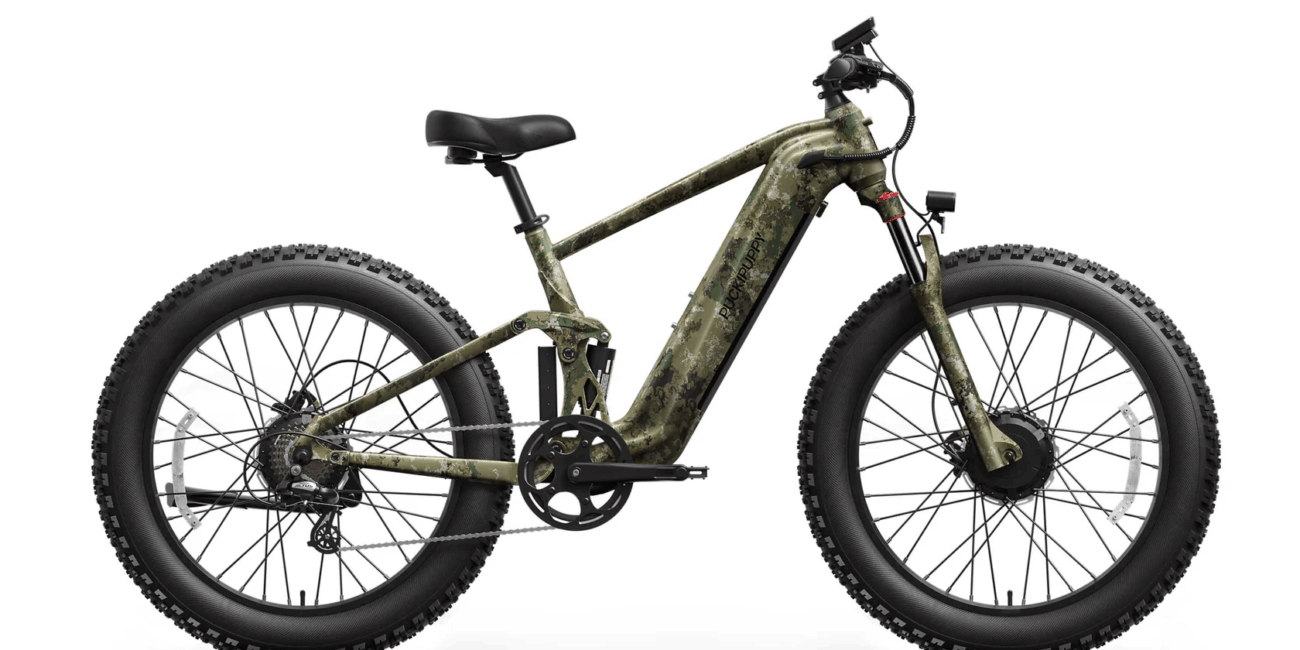Picture this: It’s an hour before dawn, and you’re facing a grueling, three-mile hike into your favorite backcountry spot. You’re already dreading the sweat you’ll break and the noise you might make, potentially alerting every creature in the woods. And if you’re successful, the real work—hauling a hundred pounds of meat and gear back out—is still to come. For generations, this has been the hunter’s reality. But a technological revolution is changing the game, offering a silent, powerful advantage: the electric hunting bike.
These aren’t the electric bicycles you see cruising city streets. They are purpose-built machines designed to conquer the most challenging terrains, extend your range, and turn the most arduous aspects of hunting into a seamless, efficient operation. This guide will walk you through everything you need to know about electric hunting bikes, from their core components to how to choose the perfect one for your needs.
What is an Electric Hunting Bike?
An electric hunting bike is a specialized off-road eBike engineered specifically for hunters. While they share the basic principles of a standard eBike—a battery, a motor, and pedal assistance—they are built to a much more rugged standard.
The key components that set them apart include:
- High-Torque Motors: These bikes feature powerful motors, typically ranging from 750W to 1500W or more. You’ll find two main types: hub drives (located in the wheel, simpler and more affordable) and mid-drives (located at the bike’s crank, offering better weight distribution, torque, and hill-climbing efficiency, especially under heavy loads).
- Long-Range Batteries: The battery is the bike’s lifeblood. Capacity is measured in Watt-hours (Wh). For serious hunting, look for batteries with 48V or higher and capacities starting at 15Ah (approx. 720Wh), with many premium models offering 20Ah (960Wh) or more for extended range.
- Fat Tires: The signature feature of most hunting eBikes is their wide, knobby fat tires (typically 4 to 5 inches wide). These provide incredible traction, stability, and a “float” effect that allows you to glide over mud, sand, snow, and loose terrain that would stop a traditional bike or ATV in its tracks.
Why You Need an Electric Hunting Bike: 5 Irresistible Advantages
Silent Stealth and Concealment: The electric motor operates almost silently. You can move through the woods without the roar of a gas engine, allowing you to get closer to game without being detected.

This is a bowhunter’s ultimate dream.
Expanded Range and Access: An eBike lets you cover ground 3-4 times faster than on foot. You can quickly and easily access remote, pressure-free zones deep in public land that are too far for most hunters to hike, giving you exclusive access to prime territory.
Efficient Energy Management: Hunting is about patience and precision, both of which are compromised when you’re exhausted. By letting the motor do the hard work of getting you to your spot, you save your energy for the hunt itself—setting up, glassing, and making the critical shot.
Superior Hauling and Recovery Capability: The most back-breaking part of a successful hunt is getting the animal out. Hunting eBikes are built with sturdy frames and high payload capacities (often 300+ lbs). With a rear rack or a small trailer, you can transport your quarry out with dramatically less physical strain.
Eco-Friendly and Higher Trail Access: eBikes produce zero emissions, leaving no scent trail and minimizing your environmental impact. Critically, in many areas, they are classified as “non-motorized vehicles” or allowed on trails where traditional gasoline-powered ATVs and UTVs are prohibited.
How to Choose Your Electric Hunting Bike: A Buyer’s Guide
Selecting the right bike depends on your primary needs and hunting style.
Assess Your Primary Hunting Terrain:
- Hilly/Mountainous: Prioritize a mid-drive motor for its superior torque and climbing ability.
- Flat/Open Country: A powerful hub drive motor may be sufficient and more budget-friendly.
- Soft Ground (Mud/Snow): Ensure the bike has aggressive, knobby fat tires for maximum flotation.
Analyze the Core Components:
- Motor: Mid-drive is generally preferred for serious, off-road hunting due to its efficiency. Look for a high torque rating (85 Nm or higher) for strong pulling power.
- Battery: Don’t just look at voltage (V). Focus on Watt-hours (Wh). A higher Wh number means a longer potential range. A removable battery is also a huge plus for easy charging.
- Frame: Ensure the frame is made of durable aluminum or steel and is the correct size for you. Check the total payload capacity (rider + gear + game).
Key Performance Metrics:
- Torque (Nm): This is the rotational force. More Nm means better acceleration and hill-climbing.
- Top Assisted Speed: Be aware of local laws. Most “Class 2” eBikes are capped at 20 mph with a throttle, while “Class 3” can assist up to 28 mph (pedal-assist only).
- Suspension: A full-suspension bike offers a smoother ride on very rough terrain but adds weight and cost. A hardtail (front suspension only) is often a good compromise.
Essential Add-Ons & Features:
- Integrated mounting points for racks and panniers.
- Quality camouflage finish to break up your outline.
- A quiet, belt-driven system (vs. a chain) for ultimate stealth.
- A bright, off-road headlight for pre-dawn and post-dusk travel.
Laws, Regulations, and Ethical Practices
This is a critical and often-overlooked aspect.
- Know Your Local Laws: Regulations for eBikes vary by state, county, and land management agency (e.g., BLM, US Forest Service). Some areas treat them like motorcycles, others like bicycles. Always check the specific rules for the land you will be hunting on regarding motor type, class, and trail access.
- Hunt Ethically:
- Always yield the right-of-way to hikers and horseback riders.
- Obey all trail closures and motorized vehicle restrictions.
- Practice “Leave No Trace” principles. Stay on designated trails to prevent erosion and habitat damage.
- The silent nature of an eBike is a privilege; use it responsibly to avoid giving hunters a negative reputation.
Frequently Asked Questions (FAQ)
- What is the real-world range of an electric hunting bike?
Range varies drastically based on terrain, load, rider weight, and assist level. A 750Wh battery might get you 20-40 miles on moderate terrain with minimal assist, but that can drop to 15-20 miles when climbing steep hills with a heavy load on high power. - Are they waterproof?
Most quality hunting eBikes have components with an IP rating (e.g., IP65 or IP67), meaning they are highly water-resistant and can handle rain, puddles, and creek crossings. However, they are not submarines and should not be fully submerged. - Is the investment really worth it?
When you consider the cost of a used ATV/UTV, trailer, fuel, and maintenance, a high-end eBike is competitive. Factor in the silent operation, legal trail access, and physical benefits, and for many hunters, it becomes an invaluable tool that pays for itself in successful and more enjoyable hunts.
Conclusion
The electric hunting bike is more than just a new gadget; it’s a paradigm shift in how we access and experience the wilderness. It empowers hunters to go farther, hunt smarter, and recover game more efficiently, all while maintaining the quiet and connection to nature that is at the heart of the sport. By understanding the technology, the advantages, and the responsibilities that come with it, you can make an informed decision and equip yourself with what might be the most significant hunting advantage since the compound bow.



